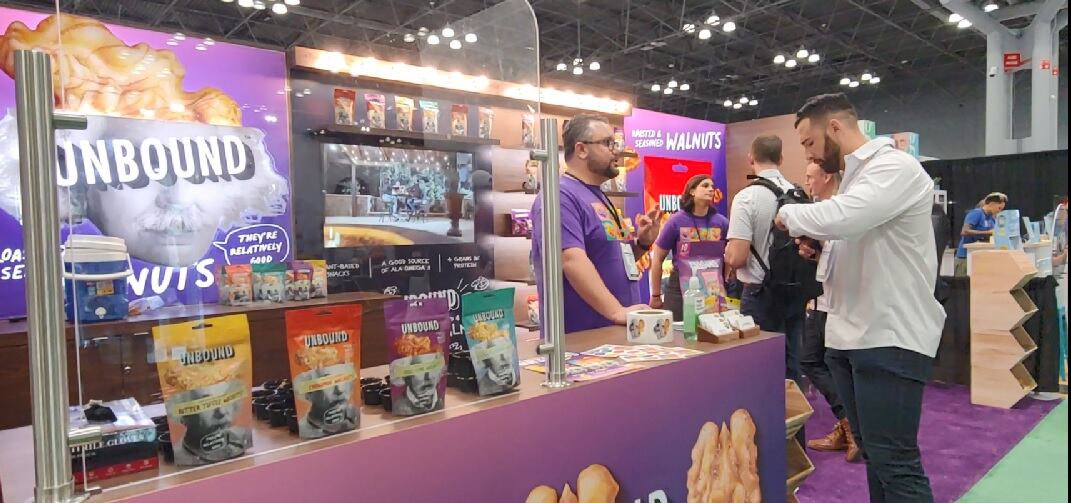Ament explained to FoodNavigator-USA how Simple Bars are formed with minimal ingredients and allulose, while communicating these features directly on pack for consumer ease.
“We don't have any hidden ingredients, hidden sugar, and we add superfoods in [each] batch,” she said.
Simple’s allulose is certified as a no sugar sweetener by Sugar-wise, and its logo is displayed on the packaging. The brand is one of more than 700 Sugar-wise sugar-free certified brands in more 70 countries across Europe, Australia, China and the Middle East.
As sugar continues to shape both consumer preferences and food policy, CPG brands turn to no-calorie sweeteners as a nutritional option without sacrificing taste. As a functional sweetener in baked foods, allulose offers browning and bulk without calories; for Simple, allulose is blended in with its ingredients of whole nuts and seeds for added nutritional content.
“[With] our minimalist ingredients, sweetened by allulose and [certified] no added sugar, we have about 85% less sugar…which makes us stand out,” she opined.
Next month, Simple plans to launch its new product—powdered allulose— for consumers to bake with allulose at home.
Ament began testing recipes in her own kitchen before collaborating with a food scientist to launch its current portfolio which includes Chocolate Sea Salt, Almond & Dragonfruit, Almond Matcha Chia and Walnut & Golden Spices. The initial ingredient lineup remains with almonds, walnuts and peanuts, with the addition of spices like cinnamon, turmeric and ginger.
Transparency is the focus of Simple’s packaging
Implementing a clear window on the packaging with on-pack label attributes (no sugar added, five grams of protein, gluten-free, keto, non-GMO, etc.) was a strategic move for Ament who wanted consumers “to see the product itself,” and which mirrors her own values as a consumer looking for transparency on the label.
“It’s open and transparent, so it really represents my beliefs. Whenever I buy a product, I want to see how it looks before [opening it]. So, the clear window and logo lets people know how simple the product is. And that makes a difference,” she explained.
Online and hospitality distribution fit the brand at its current stage
One of the challenges for snack bar brands is determining the appropriate distribution channel that not only allows a closer connection with consumers and retailers but creates space to grow into the next stage.
Simple’s distribution is focused primarily on the brand’s website and Amazon, as well as co-working spaces and hotels, reaching consumers who are traveling and working and typically look to convenient, nutritious options.
Developing an ingredient and values-oriented strategy is what will help snack bar brands grow successfully, Sarah Philips, VP, Emil Capital explained during FoodNavigator-USA’s editorial webinar, Raising the Snack Bar: Exploring Growth Drivers, Innovations and Consumer Cravings.
The free webinar featured detailed analysis on the current snack bar market and opportunities for brands to differentiate through ingredients, distribution channels and marketing.
FoodNavigator-USA’s free webinar is now available on-demand to view with registration.





